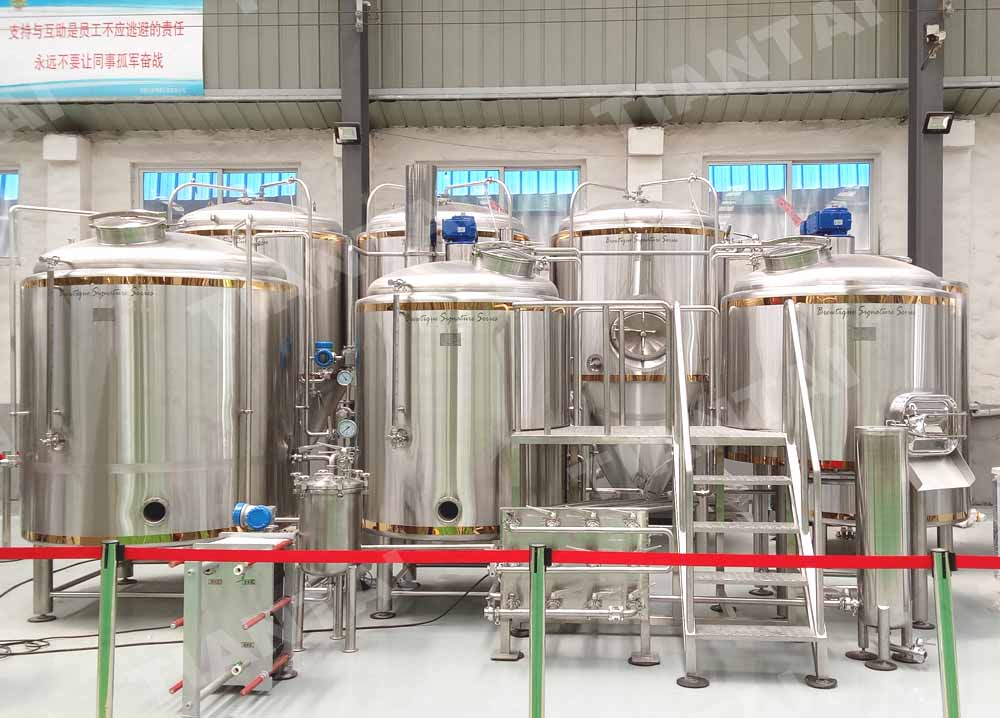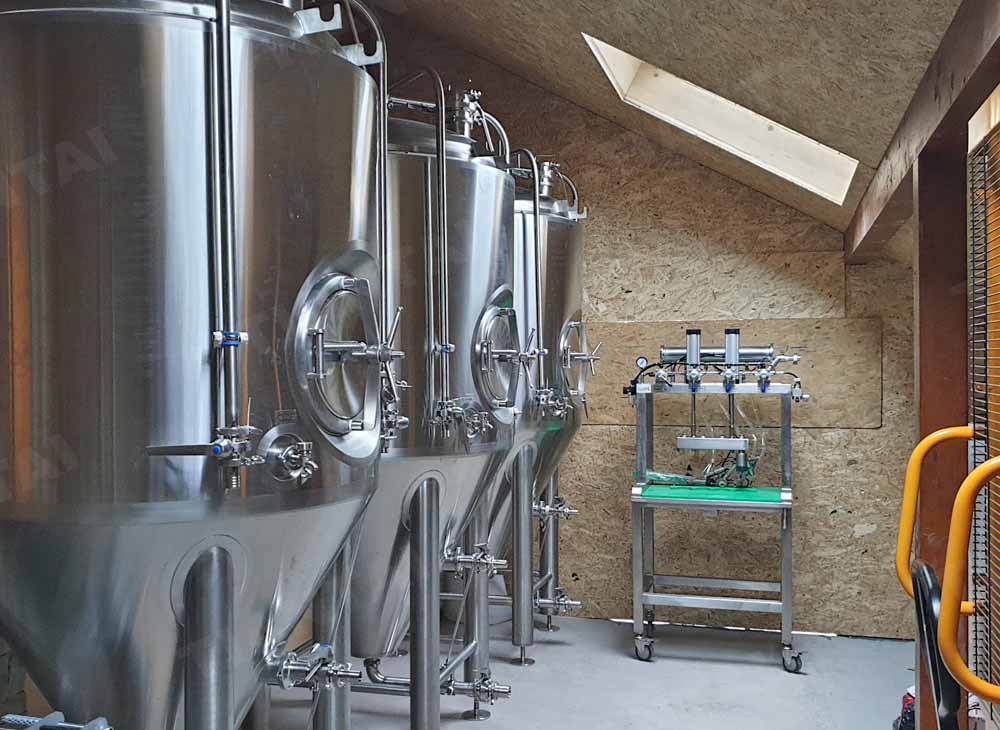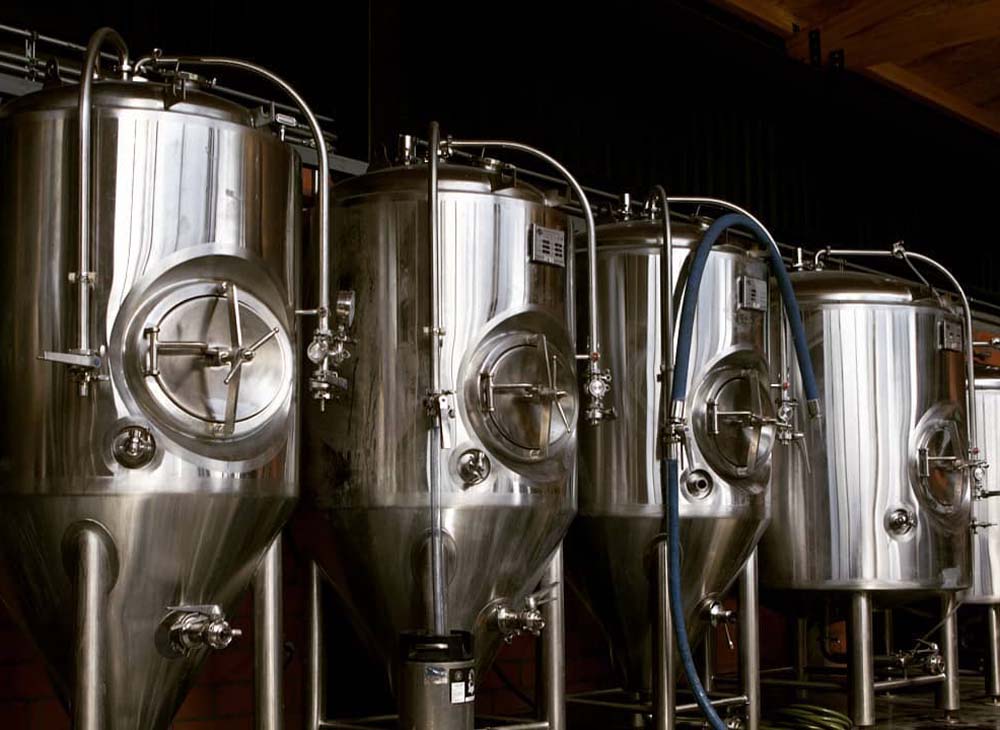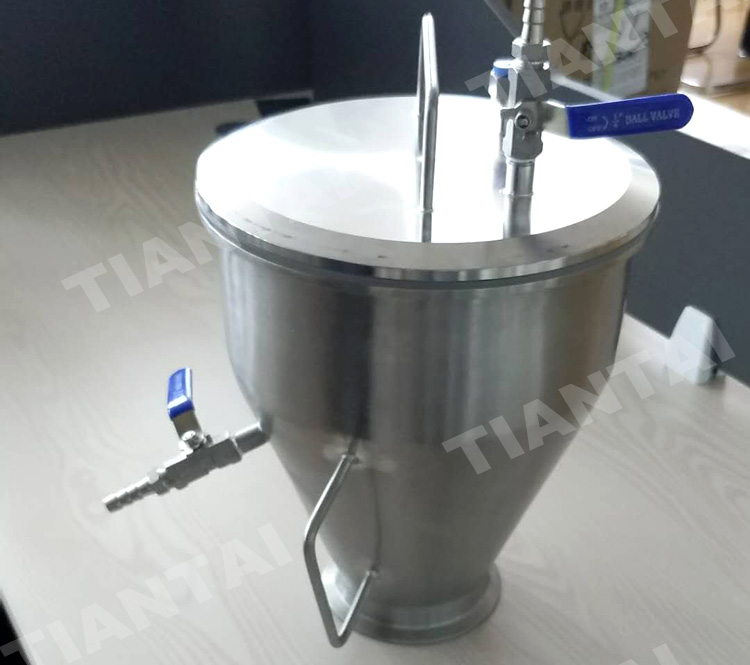How the heating methods effect the brewhouse structure?
- Jun 10, 2017
- 93
- beer
How the heating methods effect the brewhouse structure?
Here are the main features and some of our opinion for the heating options and the related brewhouse structure, hoping they bring you
some reference and consideration to value each factors and thus to figure out the most suitable configurations.

Steam heated brewhouse:
---Brewhouse structure: typical mash/lauter tun, kettle/whirlpool tun, hot liquor tank
---All of the three vessels are with jacket for steam heating
So the mash/lauter tun can also maintain the temperatures and heat the vessel directly for direct mashing out before lauter (no need to add water to rise the mash temperature to 78℃).
---Another advantage of steam heating is that the steam heating can heat gently and evenly without touching the wort, so it is easier to control the heating process and temperatures and the wort quality also better.
But the steam boiler installation cost much. So for brewery below 1500L, you could consider the electric heating or direct fire heating to save the budget.
Electric heated brewhouse
---Suitable brewhouse structure: mash/lauter/whirlpool tun, kettle tun, HLT
---The kettle and HLT are mounted with electric heating coils inside, so the brewmaster need to finish the mashing out via adding/mixing extra hot water with the mash to rise the temperature to 78℃ before lauter process.
--Because here is electric heating coils inside the kettle, so to not let the elements effect the whirlpool process, the whirlpool vessel is independent and it is stacked under the mash/lauter vessel
(for the steam heating, the whirlpool function is combined with the kettle).
---For small volumes, usually to save the cost, the hot water tank is not included. The reason is: Because the whirlpool vessel is under the mash/lauter tun,
so it can be also used as a buffer tank to hold the wort during the lauter process, so here is no need to empty the kettle immediately before lautering,
so the kettle can act as a hot water tank temporarily for mashing and also sparging. When the complete lauter process is finished, we can then purge the kettle to hold the wort transferred from the buffer tank.
But here are also two shortage without a hot liquor tank: If brew two batches per day, we will take longer time; The warmed water from the heat exchanger can not be recycled.
So if the budget is ok, a HLT can make work easier.
Direct fire heated brewhouse
---Suitable brewhouse structure: mash/lauter/whirlpool tun, kettle tun, HLT
---The hot liquor tank and kettle are both built with dire chamber. Usually 2xburners are included so both the kettle and HLT can be heated at the same time.
But to save the cost (of building the fire chamber and burner),and also considering the hot water is normally not heated at fast speed. We can also only let the kettle use the direct fire heating, and the HLT use the electric heating.
---To decrease the wort scorch risk, we add the mixer&motor inside the kettle. Then to not let the mixer effect the whirlpool process,
the whirlpool vessel is independent and it is stacked under the mash/lauter vessel (for the steam heating, the whirlpool function is combined with the kettle).
---Since the mash/lauter tun is without heating function, the brewmaster mash out via adding extra hot water to rise the mash temperature to 78℃ before lauter process.
We are manufacture of commercial beer brewing equipment. Contact us freely if you have any opinion or questions.
Edited by Jana Wang
Sales manager
Contact email: [email protected]
Here are the main features and some of our opinion for the heating options and the related brewhouse structure, hoping they bring you
some reference and consideration to value each factors and thus to figure out the most suitable configurations.

Steam heated brewhouse:
---Brewhouse structure: typical mash/lauter tun, kettle/whirlpool tun, hot liquor tank
---All of the three vessels are with jacket for steam heating
So the mash/lauter tun can also maintain the temperatures and heat the vessel directly for direct mashing out before lauter (no need to add water to rise the mash temperature to 78℃).
---Another advantage of steam heating is that the steam heating can heat gently and evenly without touching the wort, so it is easier to control the heating process and temperatures and the wort quality also better.
But the steam boiler installation cost much. So for brewery below 1500L, you could consider the electric heating or direct fire heating to save the budget.
Electric heated brewhouse
---Suitable brewhouse structure: mash/lauter/whirlpool tun, kettle tun, HLT
---The kettle and HLT are mounted with electric heating coils inside, so the brewmaster need to finish the mashing out via adding/mixing extra hot water with the mash to rise the temperature to 78℃ before lauter process.
--Because here is electric heating coils inside the kettle, so to not let the elements effect the whirlpool process, the whirlpool vessel is independent and it is stacked under the mash/lauter vessel
(for the steam heating, the whirlpool function is combined with the kettle).
---For small volumes, usually to save the cost, the hot water tank is not included. The reason is: Because the whirlpool vessel is under the mash/lauter tun,
so it can be also used as a buffer tank to hold the wort during the lauter process, so here is no need to empty the kettle immediately before lautering,
so the kettle can act as a hot water tank temporarily for mashing and also sparging. When the complete lauter process is finished, we can then purge the kettle to hold the wort transferred from the buffer tank.
But here are also two shortage without a hot liquor tank: If brew two batches per day, we will take longer time; The warmed water from the heat exchanger can not be recycled.
So if the budget is ok, a HLT can make work easier.
Direct fire heated brewhouse
---Suitable brewhouse structure: mash/lauter/whirlpool tun, kettle tun, HLT
---The hot liquor tank and kettle are both built with dire chamber. Usually 2xburners are included so both the kettle and HLT can be heated at the same time.
But to save the cost (of building the fire chamber and burner),and also considering the hot water is normally not heated at fast speed. We can also only let the kettle use the direct fire heating, and the HLT use the electric heating.
---To decrease the wort scorch risk, we add the mixer&motor inside the kettle. Then to not let the mixer effect the whirlpool process,
the whirlpool vessel is independent and it is stacked under the mash/lauter vessel (for the steam heating, the whirlpool function is combined with the kettle).
---Since the mash/lauter tun is without heating function, the brewmaster mash out via adding extra hot water to rise the mash temperature to 78℃ before lauter process.
We are manufacture of commercial beer brewing equipment. Contact us freely if you have any opinion or questions.
Edited by Jana Wang
Sales manager
Contact email: [email protected]




.jpg)